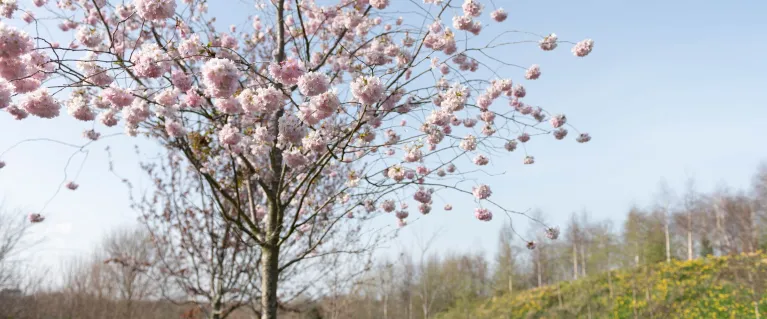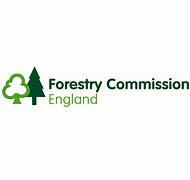
Aim: growing and expanding
Overview
There are many constraints to tree planting such as presence of other important habitats, competing recreational uses, or in built environment factors such as underground utilities. Due to the dynamic nature of trees there will be natural declines in the existing tree stock that need to be addressed and replaced.
Increasing London’s tree canopy cover is essential to help tackle social and environmental challenges. The London Environment Strategy sets an ambitious target to increase canopy cover by 10% which would provide approximately 3,300 hectares of additional canopy. New evidence and decision-support tools can help to identify where tree planting or natural regeneration may be able to deliver the greatest benefits.
Resources by goal
Goal 5 - Create more woodland
Create more woodland, especially species-rich woodland, in London, particularly in the Green Belt.
CPRE London are collating an evidence base that will support advocacy work for woodland creation in London. This will particularly focus on the Green Belt and Metropolitan Open Land. The advocacy plan will help link landowners and managers with training and support. This will support the creation of realistic targets and delivery of woodland cover across London by 2050.
This work is funded by the Trees Call to Action Fund and is part of the project 'Delivering the London Urban Forest Plan'.
As a Community Forest, Thames Chase Trust received funding from the government’s Trees for Climate fund to create more hectares of woodland by 2021. As well as funding the tree planting activity itself, the grant enabled management of all aspects of the new woodland creation, including community and landowner engagement as well as development of new approaches to long-term woodland management.
Goal 6 - Plant more street trees
Increase the number of trees on London’s streets, particularly in areas of currently low canopy cover.
Trees for Streets run street tree sponsorship schemes on behalf of local councils. Residents or businesses can choose where they want a new street tree planted and if the location is suitable a sponsorship payment will be taken ready for planting in late autumn.
Street Trees for Living are running schools planting projects in Lewisham and Southwark for local communities and schools. The project will involve up-skilling volunteers and supporting them to become tree-guardians to take on the care and auditing of street trees.
Street Trees for Living, Lewisham Council, and Greentalk, have been awarded money by the Mayor of London's Grow Back Greener Fund 2022 to pilot an innovative project called Grow Back Together to help increase Lewisham’s tree stock. Vacant tree pits are stencilled on the pavement and then residents can then sign up to adopt the candidates so that there is a 'Tree Guardian' in place. Once the pit is planted tree guardians receive watering prompts and care guidance.
In 2023-4 the GLA and the London Tree Officers Association commissioned an on-the-ground survey of vacant tree pits in priority wards. The project will produce mapped data that enables stakeholders to identify opportunities for planting street trees in London.
Goal 7 - Plant more trees in green spaces
Increase the number of trees in London’s parks and green spaces, particularly in areas of currently low canopy cover.
Goal 8 - Improve information available
Ensure high quality, up to date information on the extent, condition and benefits of London’s urban forest is accessible to land managers, decision-makers and the public.
Capital Asset Value for Amenity Trees (CAVAT) provides a method for managing trees as public assets rather than liabilities. It is designed not only to be a strategic tool and aid to decision-making in relation to the tree stock as a whole, but also to be applicable to individual cases, where the value of a single tree needs to be expressed in monetary terms.
i-Tree is a software suite that provides urban forestry analysis and benefits assessment tools. i-Tree provides baseline data that can be used to demonstrate value and set priorities for more effective decision-making. An i-Tree Eco survey was undertaken in 2014 to understand the natural capital of urban trees in London and to value the services they provide.
The Mayor of London has created a series of interactive maps and datasets to help organisations and individuals in London understand, explore and improve London’s green infrastructure.
Funding available
- Landowners, land managers and public bodies can apply to the England Woodland Creation Offer for support to create new woodland, including through natural colonisation, on areas as small as one hectare.
- If you have a site of at least half a hectare and can plant over 500 trees, the Woodland Trust’s MoreWoods scheme can help design your woodland, create a bespoke species mix, supply the agreed trees and tree protection, and cover up to 75% of costs.
- The Woodland Trust’s MOREhedges scheme includes saplings, advice and funding for new hedging projects of 100 metres or more.
- The Woodland Carbon Guarantee aims to help accelerate woodland planting rates and develop the domestic market for woodland carbon for the permanent removal of carbon dioxide from the atmosphere. Applications are currently closed.
- The Urban Tree Challenge Fund provides 80% of standard costs for the planting and establishment of trees in urban and peri-urban areas. Anyone can apply if you either have full management control over the land or signed consent from those with management control over the land for the duration of the Agreement.
- The Local Authority Treescapes Fund is the key government offer for local authorities to restore tree cover in non-woodland areas which may have been impacted by issues such as disease, habitat degradation or ageing tree stock. Planting can be in urban areas, beside roads and footpaths as well as trees in hedgerows.
- The Tree Council’s Branching Out Fund supports schools, community groups, parish and town council and Tree Warden Networks to plant trees, hedges and orchards. Grants can be between £200 and £2,000. Projects must have a strong community involvement and should enhance local wildlife and biodiversity.
Maps and data
- This interactive map was created as a preliminary analysis of the potential for woodland creation in London’s Green Belt.
- The London Tree Map shows the locations and species information for over 880,000 of London's trees. These are predominantly street trees, but also some trees in parks and other open spaces.
- The London tree canopy cover map shows how much of London is covered by trees. It was developed by analysing high resolution colour infrared imagery using machine learning techniques.
- The Green Infrastructure Focus Map is a new tool to help London’s decision-makers identify where green infrastructure improvements and investments might be best targeted, and what kind of interventions might be most useful for the needs of a specific area.
- The Sustainable Drainage Systems (SuDS) Case Study Map shows the locations of the SuDS projects that the GLA are aware of across the city. SuDS can include trees.
- The Climate Risk Map highlights vulnerability to climate change across Greater London. Metrics include tree canopy cover.
Get involved
- Residents and business can apply to sponsor a tree in participating London boroughs through Trees for Streets.
- Residents in Lewisham can support the Lewisham’s residential street tree planting campaign.
Funders



Need a document on this page in an accessible format?
If you use assistive technology (such as a screen reader) and need a version of a PDF or other document on this page in a more accessible format, please get in touch via our online form and tell us which format you need.
It will also help us if you tell us which assistive technology you use. We’ll consider your request and get back to you in 5 working days.